INTRO:
Werewolves are featured frequently in video games, often as cunning but still bestial enemies. Tower defence is a genre that can allow the implementation of other gameplay elements and is applicable to just about any backstory setting. Werewolves and tower defence have been in the same game before too, albeit the former are no more sophisticated than stupid mooks.
Sang-Froid: Tales of Werewolves is a game that tries to do better with this mixture, with mixed results.
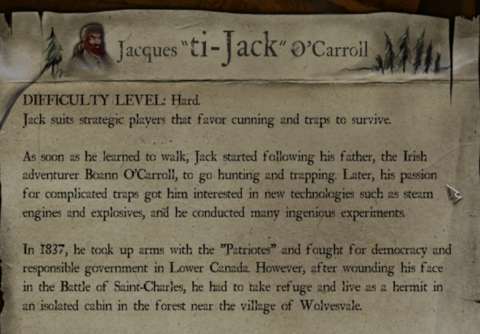
PREMISE:
The game is set in the mid-nineteenth century Canada, and in the hinterlands where lumber and hunting were the main economic activity. There was the town of Cloudsvale, an otherwise unremarkable settlement if not for a calamity that is about to befall it.
The “Invisible Beast” has come, in the guise of the Devil (or is it the other way around?). It seeks a young lady, who has recently been accused of witchcraft after she survived the lustful attention of the town’s parishioner.
She has to seek refuge with her two brothers, but then she fell into a coma-like trance. Their land comes under nightly attack by waves of bedevilled wolves, the titular werewolves and other things. One of the brothers has to brave these attacks by directly fighting them and setting up lethal traps around their land.
Meanwhile, the Devil schemes to have the lady delivered to it. The brothers also discover more about their parentage and their sister’s ability, albeit through the hostile attention of native lycanthropes.
MUST HAVE WINDOWS MEDIA CODEC:
The game has videos for both tutorials and story-telling. This is nothing surprising. However, these videos require the player’s computer to have the standard Windows Media codecs already installed. Regular Windows installations already have these, but the “N” versions do not. Attempting to install them manually will not work, because the game’s coding points to native versions of the codecs. Without these, the game simply freezes at these videos and becomes unplayable.
AMATEURISH PRESENTATION:
The previous text passages about the story are perhaps overstating the entertainment value of the game’s narrative. In truth, the story is delivered in amateurish and sometimes embarrassingly mediocre ways.
Firstly, there are the cutscenes. The top halves of the characters’ models are shown for the articulation of their body language, gestures and facial expressions. These would have been convincing – if they were still portraits.
The characters transition from one pose to another with minimal animations, thus giving them the impression of mannequins. Then they give the impression that they are hand puppets when they exit cutscenes, which they do by simply sliding off the screen.
There is also their mediocre lip-synching. The developers tried, but the characters’ face models had been made using an artstyle that do not lend well to convincing lip-synching.
This is the kind of presentation that the player would expect throughout a playthrough. Being rewarded with these clumsy cutscenes for having pursued the storyline is not likely to be satisfying to most.
Fortunately, the player could at least skip the cutscenes. They would be especially unbearable the second time around, unless of course the player is playing with a different brother, in which case he/she might want to listen to how different their voice-overs are in certain scenes.

THE BROTHERS:
The two O’Carroll brothers, Jack and Josy, are implemented in the gameplay officially as difficulty settings of sorts. Ostensibly, Josy is the “easier” of the two because he is a mountain of muscle. However, this is a somewhat misleading statement on the part of the developers, especially to players that have played playthroughs with both brothers.
Josy may be a tough and powerful brute. However, he is noticeably larger and does happen to have larger hitboxes that make it easier for enemies to nip on his heels or hit him from the sides. His bigger size does not equate wider swings for his axe either, though he does compensate by hitting a bit harder than his brother does.
Jack’s advantage of being smaller in size is obvious: he has smaller hitboxes. Furthermore, he moves significantly faster than his brother (who runs at a lumbering speed) and his sprints carry him further distances over every second than his brother’s sprints do. Of course, his setbacks are as what is officially stated: he does not have as much stamina and health as his brother. The lesser stamina is a major disadvantage. (Stamina will be explained further later.)
CAN ONLY PICK ONE BROTHER FOR A PLAYTHROUGH:
Presumably, one brother goes out every night to fight off the inhuman intruders, whereas the other keeps watch on their sister Josephine, whose comatose body is prone to floating about and speaking in an otherworldly voice.
Logically, the brothers could alternate their tasks; this would have allowed the player to use either brother for any night. However, any playthrough only ever allows the player to use one of the brothers; the other is off-limits. There may be a lost opportunity to improve the sophistication of the gameplay.
HEALTH:
The brothers are mortal, so they have a health meter. Curiously, the health meter looks like a bisected heart. It is unclear whether this is some form of symbolism or not, but the two halves do not make it easier to see the health meter.
Anyway, like most other video game protagonists, either brother functions at full performance as long as the meter is not entirely empty. Either brother starts every night at full health, regardless of how much they were injured in the previous night.
During the night, health can only be restored in a few ways. There is a skill that gives the brother a bit of health upon eliminating an enemy, but the amounts are not significant enough to completely turn the health meter around.
The most effective method of restoring health also happens to require a monetary price. Bottles of eau de vie can be purchased from the town’s salon, and can be used to (somehow) heal him to full health.
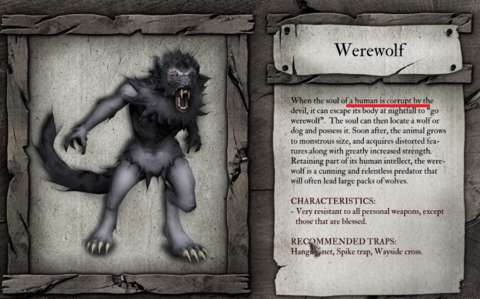
STAMINA:
Stamina is what the player would be monitoring, more so than even health. This is because the player character spends stamina on two of the most important actions in the gameplay: making melee attacks and sprinting.
Players who have played the King’s Field successors would be quite familiar with how stamina works. Attacks and sprinting consume stamina. If the player could not manage stamina, it tanks to zero (something that the game will indicate with ominous red flashes around the border of the meter). If it tanks to zero, the player character becomes noticeably weaker and slower in combat. When fighting the practically indefatigable enemies in this game, having this happen is usually a bad thing.
Moreover, if stamina has been drained completely to zero, stamina will not begin to replenish until a few seconds later. Therefore, it is important for the player to avoid stamina dripping down to zero.
There is a visual problem with the stamina meter, unfortunately. The dim colour that is used for the fill of the meter does not contrast well against the colour of the snow at night.
RAGE:
As the brother fights, he builds up “Rage”, which can eventually be expended to unleash a special attack that cannot be interrupted. Incidentally, Rage-fuelled attacks also make the brother invincible during the duration of the attack animations.
Rage can be hoarded as long as the player does not use any special attack. However, when it is spent, it is spent in its entirety, including any points of Rage that has yet to accumulate into a full “level”.
Speaking of which, the level of Rage determines the power and reach of the special attack. The player starts with a maximum Rage level of just one, but unlocking Rage-related skills increases the maximum level. Higher-level Rage attacks can turn the tide of battle rather easily.
However, the player must be certain of where the hitboxes of the special attacks would be applied, lest the attacks hit nothing. For example, attacks of the first level of Rage only has the brother hitting whatever is in front of him, whereas the second level has him doing a swinging attack that can hit multiple enemies.
In addition to building up rage by fighting enemies, the player could have the brother drink rye whiskey to gain maximum Rage immediately. This is a costly drink, and it is easy to waste if the player has not directed the brother down the path of Rage attacks (more on this later).
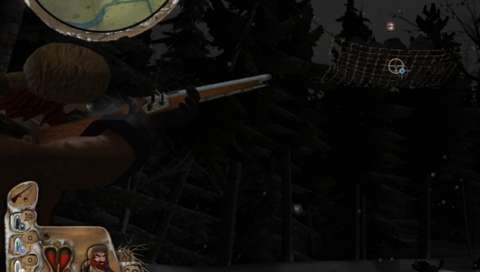
AXE:
One of the two weapons that the brother is armed with is an axe. This is a woodcutter’s axe, but it is just as effective when used on wolf flesh.
The axe is the only readily available weapon; neither brother will let go of it, no matter how much he gets knocked around.
Axe attacks work on a system of three-hit combos. The third hit always hit the hardest, even if the first two missed. The third hit is also guaranteed to knock down just about any foe. This bit is useful to keep in mind because either brother can permanently stun-lock foes, as long as they have the stamina to keep up the barrage of attacks.
The player character begins with the weakest of axes, but can eventually replace it with better ones. Axes have ratings, which determine its damage output, animation speed, size of their hitboxes and such.
With the exception of a late-game axe, any axe can be blessed to make it permanently effective against most enemies. Otherwise, a regular axe does reduced damage against certain enemies, especially werewolves. On the other hand, blessing axes does require a considerable donation to the local parish.
Curiously, all of the axes may have been made to fit Josy’s model, because they are rather large. Having Jack heft them around is comical, and may explain why his stamina rating is not great.
GUN:
The game is set close to the middle of the nineteenth century, so muzzle-loading firearms are still around and were used for hunting in the hinterlands. Thus, the brother happens to have a gun of his own, and will be using it to shoot at foes.
The brother starts with a low-quality musket, but can eventually replace it with a gun that has better damage per shot, range and other characteristics.
AIMING THE GUN:
Aiming the gun requires the player character to stand still; there will be no running and gunning. The shot from the gun will immediately reach wherever it is pointed at, however, so there is this convenience.
Each gun has an effective range; its bullet will not do anything beyond this range. If an enemy is within range, bringing the aiming cursor close to the enemy will cause the player character to automatically aim at its general direction. This is indicated with a yellow centre for the crosshair, which follows the enemy around as long as it does not stray too far from the centre of the screen.
If the player could bring the enemy’s head (or what passes for its head) closer to the centre of the screen, the cursor locks onto its head; this is indicated with a green centre for the crosshair. Firing the gun when the crosshair is like this guarantees a headshot; the game gleefully announces this with text floating above the target. Of course, headshots inflict more damage, but there is no other advantage.
RELOADING:
A visual indicator on the left side of the screen shows the status of the gun. Preferably, the icons for the gun and its musket ball should be opaque, indicating that the gun is ready for use. Using the gun resets the visual indicator, which begins to fill in as the gun is cleaned and reloaded. The appearance of the musket ball indicates that the reload is complete.
The cleaning and reloading can take a while, and it has to be done while in the aiming mode. The player can attempt to hurry this along by clicking on the right mouse button. However, after having the fired the gun, the player should consider having the brother run away to put some distance between him and his enemies, or fight in melee.
Reloading does not take into consideration which kind of bullet that the player is using. As long as the gun is reloaded, the player can choose any bullet to be fired in the next shot; there is no need to repeat the reloading process. This is unbelievable, but convenient.
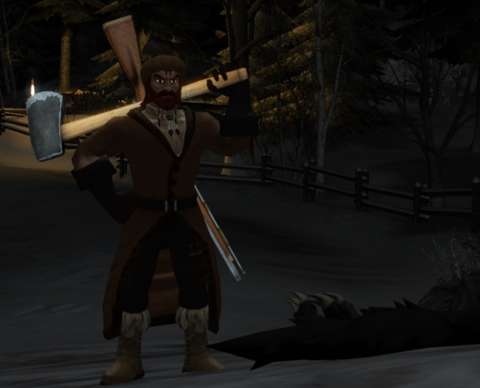
BULLETS:
Bullets are limited, though this limitation is not much of an issue because the player would not be firing bullets non-stop. Bullets have to be replenished at the general store, which stocks only 10 bullets each day. However, it is not likely that the player would be firing more than 10 each night, due to how long it takes to reload the gun.
Still, expending bullets will be part of the player’s strategy for just about every night. There are net traps that have to be (somehow) triggered by shooting them. Also, opening a fight with a gunshot is always good, mainly because gunshots will knock down most enemies.
Regular bullets can be blessed by the remaining faithful clergy in the town. Blessed bullets do not deal extra damage either, but inflicts full damage to “diabolical” enemies, such as the werewolves (who are originally wolves, albeit transfigured) and wisps (which appear to be fiery imps).
Several in-game days into the playthrough, the player can buy silver bullets after gaining access to a native American village. Interestingly, these are not any more expensive than regular bullets, but then they were crafted by the native Americans, who in this game do not consider silver to be as precious as white people do. Silver bullets do not do any more damage than regular bullets, but they inflict full damage to “mythical” enemies, namely the native true lycanthropes.
Curiously, the artwork for the bullet counters show them as cartridges instead of musket balls, even though the other visual designs of the game show the bullets as the latter. That said, none of the guns in the game are breech-loaders.
EXPERIENCE POINTS:
When the siblings survive a night, the active brother gains experience points (XP). The XP goes into the usual experience meter, which when filled, typically leads to a level gain.
Even if the player fails the night, any completed objective, if there are more than one, would still grant experience points. The player will still need to reattempt the night, but the brother retains any experience points granted from completed objectives in the previous attempt. However, in the next attempt, the player will not gain any more XP from those objectives.
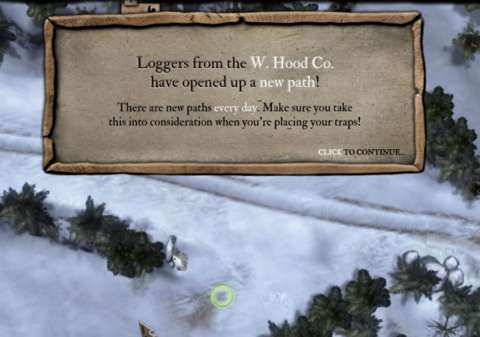
SKILLS:
Gaining a level gives the player one point to use on the development of the brother’s skills; neither brother has a unique set of skills, by the way.
Initially, the player begins at the bottom of the skill tree, because the player only has access to the lower-level skills. Nonetheless, selecting the lower-level skills is a prerequisite for gaining access to the higher-level ones, so the player might as well spend any available skill points instead of hoarding them.
As for the skills, almost all of them impart bonuses to something that is already available to the player. For example, there is a skill branch that improves the level of Rage attacks.
There may be a lost opportunity to expand the complexity of the game, such as a skill that unlocks an optional gameplay element.
CONSUMABLES & THE SALON:
If it is not apparently already, all of the consumables are alcoholic drinks. However, this is just for aesthetic purposes; the player character can drink as many of them as the player wills it and he would not become drunk or worse off in any way.
The player character has a spacious belt that has ten slots. Each slot can hold up to five units of the same type of consumable. Another slot can also hold five units of the same type, so the player could load up on specific consumables as long as there is space. (Spruce beer is a recommended drink.)
Any consumable that is not equipped on the belt is kept away in the inventory. The player can hoard as many consumables as he/she wants; the drinks will not spoil.
Consumables can be bought from the salon. (How exactly the brother would bring these drinks back home is unclear, but then, this is a video game.) The salon restock daily, and always at the same amounts. Therefore, if the player wants to hoard large amounts of drinks, the player has to make daily purchases from the salon.
ANIMATIONS FOR USING CONSUMABLES:
When either brother uses consumables, he does a drinking animation. The player should keep this in mind, because control is taken away from the player when they drink. However, the drinking animation can be easily disrupted or worked around, and the effects of the drinks are already applied when the player presses the button to consume them. Indeed, the player might want to try to interrupt the animation, just to have control returned as soon as possible.
SPRUCE BEER AND STUN-LOCKING:
As mentioned earlier, the consumable that the player would likely covet the most is the spruce beer. This is because it restores the player character’s stamina while also keeping it at 100% for ten seconds.
This makes stamina management moot, at least for ten seconds. More importantly, the brother can continue making three-hit combos, which, against one or two enemies, can stun-lock them indefinitely.
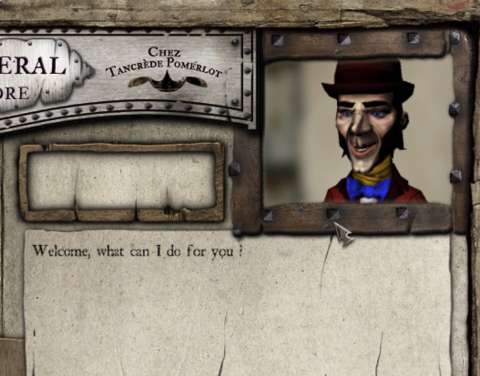
(PRESUMABLY) FUR SELLING:
Upon the completion of every night, the player is shown the number of kills and how much money has been earned from them. Gameplay-wise, this is not unlike tower defense. Narrative-wise, the brothers are selling whatever that have been harvested from them.
The latter is likely, considering that there are items like wolf hide jackets that can be bought, and whose description strongly imply that fur trading is one of Cloudsvale’s economic activities.
Anyway, more powerful enemies grant more money. Since killing all enemies is virtually mandatory, the player will be earning a limited amount of money from each night. There does not appear to be any way to enhance the amount of money that can be had from any enemy, which is a tower defence checkbox that this game does not tick.
LUMBER-CUTTING:
The siblings’ neighbour, Phidias, happens to be the owner of a sawmill, which is right next to their land too. Phidias is their main ally in the defence of their land. Incidentally, the sawmill will come under attack from the wolves too, after several nights. This is also when the game reveals another source of money.
Instead of setting up more defences for the night (more on this later), the player can have the brother work for the sawmill, thus earning some money. Depending on the player’s playstyle, skill and the enemies that would be fought in the coming night, the player character may not need to expend all his effort at stiffening defences.
Indeed, the meticulous player would be min-maxing the density of defences versus effort spent on earning money from the sawmill.
SAVING MONEY FOR BEST GEAR:
The town’s tradespersons would introduce new pieces of gear after time has passed. These tend to be straight upgrades over the previous pieces of gear. Yet, it is in the player’s interest to save money for the best pieces of gear while making do with the starting gear.
This is because the stores will eventually stop introducing new gear; the last additions are the most potent of them. The new player would not know when these would come, but of course, they could just look at a game guide. Secondly, used pieces of equipment have terrible resale value – less than 50% of their original selling price, in fact.
Even at the time of this game, this was an old and rather dissatisfying way to implement the power progression of gear.
TERRAIN:
Terrain is perhaps the most important and pervasive factor in the gameplay. There are inclines, small hills, crests and other topographies that would be prevalent in mountainous regions of North America.
Although most characters would hug the ground closely, these topographies may affect their performance. For example, wolves and werewolves can leap off crests for a slightly longer pounce, but an incline would impede them.
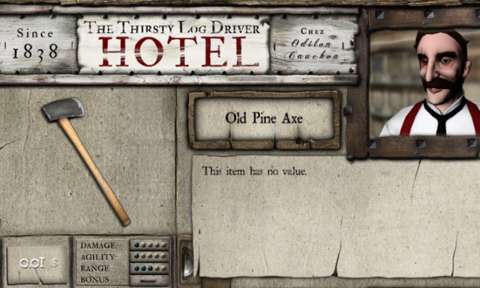
TREES:
The most significant element of the terrain is the treelines. The treelines block movement, even for the wolves (and even though most of them arrived from the forest anyway).
As the story progresses, sections in the treelines are opened up, apparently due to the activity of the sawmill. The player has no say over which sections are removed, however. These openings often benefit the enemies more than they do the player character, mainly because they outnumber the latter and thus use the opened paths more than the player would.
Fortunately, there are ways to manage these openings, as will be described later.
BUILDINGS TO PROTECT:
The main conceit of the tower defence portion of the gameplay is the protection of certain buildings. Somehow, the wolves are capable of attacking their exterior and eventually causing them to collapse into piles of smoking debris. If any one of these buildings are brought down, the player loses.
Initially, there is the siblings’ cabin; Josephine is in it, as is the other brother. Unfortunately, the other brother will not come out to defend the cabin, even if it is already being mobbed.
Eventually their chicken barn would be targeted too. Presumably, this is how the siblings are getting their daily sustenance, away from the town. It is not too far from the cabin, but it is on a hill and copses of trees further break line of sight, preventing the player from seeing the barn on the ground level from the cabin.
The sawmill is revealed afterwards. This is noticeably far away from the cabin, and a river separates it from the siblings’ land. Indeed, getting to the sawmill and back to the barn or cabin in time to stop a wave would be challenging.
ACTION POINTS:
“Action points” (APs) are the representation of the time and effort that the brothers and their allies can spend on setting up defences, or chop lumber for money. As the number of buildings that have to be protected increases, the player gains more APs. (The number of APs that each building grants is shown, but this is not really a piece of info that has to be kept in mind, since the survival of each building is mandatory.)
APs can be spent to set traps and build structures that contribute to the nightly defence. Each has its cost in APs, and some have costs in terms of money too.
Generally, traps with more APs inflict more damage but require more set-up, whereas the ones that cost money inflict more damage. Indeed, the ones that cost money would be needed if the player wants to kill off enemies without having to be there for their demise.
Any ten points of unused APs can be spent on cutting lumber, thus earning the player a bit of money. It is small, but it is possible for the meticulous player to make do with a mere portion of the total APs for the night.
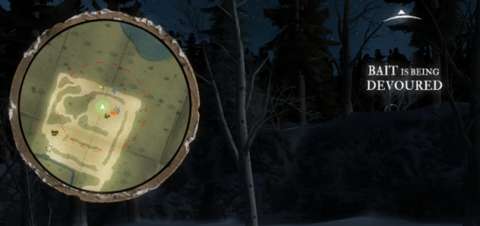
RESTARTING AT TWILIGHT:
Interestingly, the game will track the amount of money that has been earned from lumber-cutting but not spent on anything yet. If the player restarts a night using the “before twilight” option, this money is converted back to APs. Otherwise, everything else remains the same.
This allows the player to revise his/her plans, namely not spending APs on lumber-cutting. The player can also remove some unused traps to save on APs and then spend these on lumber-cutting. Indeed, min-maxing players would be using this restart feature a lot.
FIRE WALLS:
Several days into the story, the player is introduced to the fire walls. These are simply rows of controlled fire. No enemy would willingly pass through them as long as another path is available and clear to pass through. Otherwise, they will pass through them, and take very little damage for doing so.
Indeed, the main reason to use fire walls is to funnel enemies into certain locations or paths, such as a killing field or the player character with nearby bonfires. Fire lines happen to be quite cheap too.
WATCHTOWERS & ZIP-LINES:
Watchtowers are introduced some distance into the playthrough. These allow the player to shoot at faraway enemies, assuming that the brother’s gun has the range for this purpose. However, if enemies have noticed that the player character is on top of a watchtower, they will bring it down, unless the brother zips down below them.
Speaking of zip-lines, the game conveniently ignores any technological limitation on the rope systems that these zip-lines are made from. For one, the player can use the zip-lines as many times as he/she wants without having to reset them.
The watchtowers can be connected to each other with zip lines too. This allows the player to travel between them rather quickly, which is essential for success in the later nights.
TRAPS THAT INFLICT A LOT OF DAMAGE BUT REQUIRE MANUAL OPERATION:
There are traps that inflict a lot of damage. Even against enemies that are resistant to the type of damage that they inflict, they hit so hard that the inefficiency is not an issue anyway. However, these traps require minding on the player’s part, which can be costly in terms of time if there are multiple groups of incoming enemies.
Net traps are among the traps that inflict a lot of damage. However, each has to be (somehow) triggered by shooting a bullet at it. Furthermore, without a long-range gun, the player would be looking at the net instead of enemies that are going underneath them. Fortunately, area-effect traps do have visual indicators that show how many enemies are within their area of effect.
Mortars and ballistae are more examples of traps that can inflict a lot of damage, but require manual operation. Speaking of which, their methods of operation are quite different from each other and those of other traps. Unfortunately, other than tutorial videos, the game does not have a feature that lets the player practice with them in more relaxed circumstances.
Indeed, the game noticeably lacks a feature to help the player practice with the traps. The most that the player could do is just repeat nights.
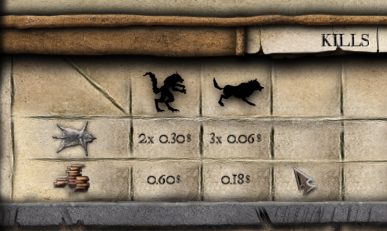
TRAPS THAT DO SMALL DAMAGE BUT ARE RELIABLE:
There are traps do not inflict a lot of damage, but they are automatic. The player will need to use this in order to deal with groups of weak enemies that would otherwise take too long to be directly eliminated.
The “wolf trap” is the first of these. (These are the kinds of traps that use spring-loaded metal jaws to inflict grievous damage, by the way.) Despite their relatively small size, they have a radius that lets them detect enemies in close proximity and inflict themselves onto them.
This convenient design also happens to be in the other automatic traps, like the spike trap. They are very useful for dealing with waves of regular wolves.
LIMITED DURATION TRAPS THAT HAVE TO BE ACTIVATED:
Some other traps stay dormant until the player activates them. This is just as well, because they have limited durations before they fizzle out.
The first of these is the bonfire. This is used together with the “fear” gameplay mechanism, which will be described later. Suffice to say that the bonfire works well in keeping enemies away as long as it is alight.
The wayside cross is the second one to be introduced. Once activated, it begins to harm any minions of the Devil in its range. These enemies will not try to run away from these traps, mainly because its damage output is small. However, the damage does stack over time, making it very useful for protracted fights. (The player should try to avoid protracted battles, however.)
Finally, there is the sacred tree, which is perhaps the closest there is to a “tower” in typical tower defence. After it is activated, the tree will hit an enemy in range with magical projectiles, at least until it runs out.
Incidentally, all of the traps of this kind require only AP.
STRUCTURES AND TRAPS THAT REQUIRE MONEY:
All traps and structures require AP to be placed, but some require money. The wolf trap and spike traps are the earliest of these. Most of these traps and structures have mechanical components, which are perhaps the reason for their cost.
That said, these traps and structures can be placed during one night and will persist through subsequent nights until they are expended.
In the case of the watchtowers and their zip-lines, they are certainly reusable, so they will persist throughout the entire game unless enemies destroy them. Indeed, developing a network of zip-lines will be necessary for the later nights, when enemy waves are scattered wide and are not easy to funnel without considerable APs spent on fire walls.
Late into a playthrough, the player may have more than enough money to spend on purchases at the town or the native village. Therefore, the player might want to spend that money on placing structures that require money, if only to speed things along.
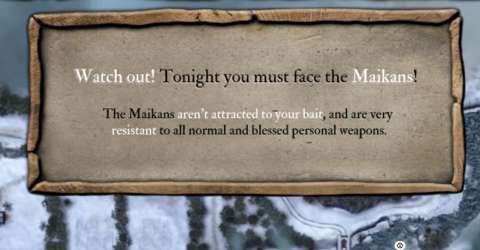
ENEMY WAVES:
Thanks to Josephine’s supernatural trance, she can detect incoming waves of hostile creatures and somehow relay this information to her siblings (likely through their familial connection). Thus, the player can see where enemy mobs would appear. Furthermore, the next wave will not come before the previous one has been dealt with. (How kind of the Devil.)
That said, they appear out of the forests. Sometimes, they even appear out of copses of trees that should have been isolated from the surrounding forests. Issues of believability aside, they are only vulnerable to damage after they have come out from among the trees and onto the paths that wind around the siblings’ land.
The player can see their intended paths before the start of the night; placing fire walls will alter those paths. The player can then use these paths to have them move over traps, or funnel them into other mobs so that they share similar paths, which the player can then trap to catch them wholesale.
However, the game does not exactly inform the player that they will only follow these paths if there is no other overriding stimulus.
ENEMIES PRIORITIZE THE PLAYER CHARACTER:
Yet, there is such an override, and that is the detection of the player character. If they could, they would pursue the brother above all other targets, including even their default targets (which are any of the buildings). Learning that they do happen to be like that by having them veer off their default path can be unpleasant, especially if the player has placed traps along their default paths. This can lead to some trial-and-error experiences, something that not every player would appreciate.
The brother’s regular run cannot outrun the wolves, and the wolves are untiring, whereas the brother will eventually run out of stamina when sprinting. Therefore, the player will have to be careful about how many to lure over. Of course, drinking a Spruce Beer would allow the brother to sprint far away from enemies.
FEAR FACTOR:
Although most of the enemies are wild and may be under the influence of the Devil, most of them are still mortal things and thus have a sense of fear. (The player character is, of course, fearless, as is typical of any action hero.)
The player character has a “fear rating” of sorts. It starts at a measly 20 points, just enough to scare regular wolves. It can be increased by harming and killing enemies, yelling really loud, using certain consumables or being near a bonfire.
Enemies also have their own “fear ratings”. Typically, more powerful enemies have higher ratings, to reflect the awareness of their own strength.
If there is any difference in the ratings in favour of the player character, this will hold them back from attacking until they can accumulate the courage to attack. Until they attack, they circle menacingly around the player character, which is a sight that can be sometimes comical if they happen to be in a small or narrow space.
If the difference is in favour of the enemies, one or more of them will break from the circling and attack the player character. The ones that will attack are marked with paw symbols above their heads. More will eventually join the attack, if the player does not do some crowd control.
The player is shown the cumulative fear rating of all enemies that have tracked down the player character. Having more enemies causes the rating to rise quicker, representing the confidence of their strength in numbers. Therefore, it is definitely not in the player’s interest to draw the attention of too many enemies at once.
All said, the fear ratings and the circling of enemies are a convenient way of giving the player a chance at managing large crowds of enemies. On the other hand, the Assassin’s Creed titles prior to the release of this game have already demonstrated such a mechanism. Therefore, this is nothing new.
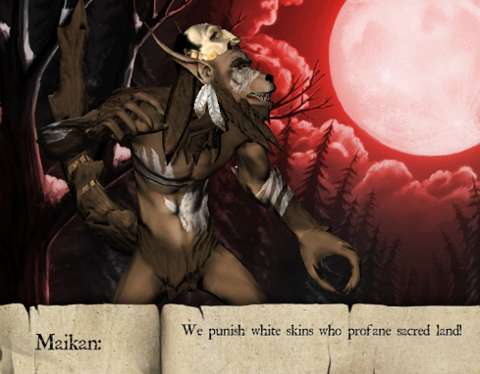
ENEMIES ATTACKING WHEN TOO CLOSE:
If the player character gets too close to circling enemies that have yet to build up courage, they will attack anyway. This is not a strong attack, however, and will hardly stagger the player character. Still, the damage inflicted is enough to deter most players who do not have a solid crowd management plan.
ENEMY TYPES ACCORDING TO BEHAVIOUR:
There have been mentions of enemy types, such as those that can be wounded with regular weapons, and those that are resistant to it. In truth, the enemies are better off being categorized according to their behaviours.
This is because exploitation of their behaviours and response to certain things is much more vital than the efficacy of the damage that is inflicted on them. More often than not, exploiting their behaviour to stall them can be more prudent than strategies about dumping out as much damage as possible.
FIRE AND ENEMIES:
Most enemies are afraid of the bonfire, thus causing them to circle around the boundaries of the bonfire’s area-of effect. Most enemies will not cross fire walls, as mentioned earlier.
However, there are a few things that will cause them to ignore the fire. Some of these are told to the player through the game’s documentation; some are not.
Enemies will cross fire walls if they have no choice; this has been implied earlier and is mentioned in a tutorial video. However, they will also cross fire walls if the player character is already being chased; this is not told to the player. The enemies will of course hurt themselves, but they will also break the fire walls, thus rendering them useless for funnelling later waves. The latter case can be an unpleasant lesson to learn the hard way.
There are only a few enemies that ignore fire, because fire does not even hurt them. Chief of these are the wisps, who are already fiery creatures. However, this also means that they can be separated from enemies that are afraid of fire, thus allowing the player to deal with them first.
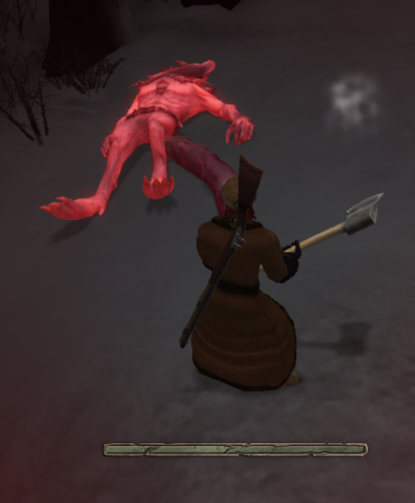
BAITING:
In lieu of building traps or structures, the brother goes on a hunt to obtain herbivorous animals as bait. The wolves and werewolves that had been influenced by the Devil are ultimately still hungry animals, and will ignore the Devil’s domination just to scarf down wonderfully fresh corpses.
The bait mainly serve to distract and stall such enemies; they do not gain any benefit from having eaten them.
It will take a while for a single individual to completely consume a piece of bait, although more powerful creatures like Grand Werewolves can do so quicker. Still, the main factor in estimating when bait would be completely consumed is the number of enemies eating them. Understandably, more beasts would mean quicker consumption of the bait.
Enemies that are eating bait will not be distracted by almost anything else, including the player character’s shouts, gunfire or downwind scent. This is not told to the player, but is a pleasant lesson to learn first-hand. A lesson that is not pleasant to learn first-hand, though perhaps deservingly so, is that disturbing the beasts’ feeding will immediately cause them to attack.
Not all enemies can be distracted with bait. Chief of these are the native lycanthropes, who certainly recognize the bait for what they are.
LURING ENEMIES:
As mentioned already, enemies will find and fight the player character above all else. Virtually all enemies can be lured away from their usual path by exploiting this tendency.
The first and most reliable way of luring enemies is by having the brother shout. Firing the gun also works, albeit with the expenditure of a bullet. If enemies are within earshot, they will break off from their default path and go after the player character’s last known location, which is indicated on the ground. This can be used to lure enemies under net traps, if the player is mindful about keeping distance away from them.
Next, there is the wind. This will be introduced close to halfway in the story, presumably due to changes in the weather. The effect of the wind carrying the brother’s scent is shown in the mini-map as a triangular arc. Any enemy within the arc will detect the presence of the player character, as long as it is within the arc.
This method of luring is not as reliable as the first one, mainly due to the fickleness of the wind’s directions. There is also no way to suppress the brother’s scent.
ENRAGED:
Some enemies become enraged after they have too much damage in a short time. When this happens, they become fiercer and more importantly, exempted from the fear mechanism. The player can expect them to go on the onslaught from then on. This gameplay element is mainly there to discourage the player from dumping too much damage on a single enemy at once.
This is actually not a wise design decision, because it hobbles one of the most useful and vital strategies of crowd management, namely target prioritization. It also appears to rely on RNG rolls to determine whether heavy damage would enrage an enemy or not.
NOT A LOT OF ENEMY TYPES:
Ultimately, there are not many types of enemies to be encountered. This is perhaps to be expected, because the main gameplay designs are their behaviours and the ways to exploit these; implementing more would have been too much for the indie developer.
Yet, there is dissatisfaction because the developer resorts to some padding to stretch out the length of the playthrough. The player will notice that many nights have waves that are composed of beasts that had been fought many times in previous nights. The player’s reward for all these repeated adversaries is the previously mentioned mediocre story-telling. The introduction of new types of defences also eventually stops.
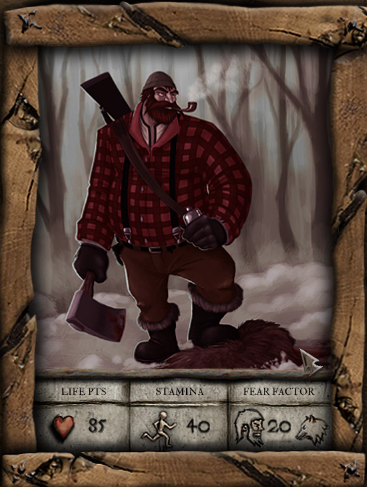
VISUAL DESIGNS:
The developer’s artist has exhibited some effort in making artwork for the game. There are the inkbrush drawings of wolves and werewolves, based on illustrations for old folklore tales of lycanthropes. The portraits of the two brothers are also quite well-done.
Unfortunately, the rest of the visual designs are not so great.
Firstly, there are the 3D models for characters. The model designers tried to make models according to the aforementioned artist’s style, but the results are rather hideous to look at from certain angles, especially those in the cutscenes. Coupled with mediocre animations for said cutscenes, they can seem rather unsightly.
At least the brothers look good while they are running around defending the farm during the night, as long as the player can look past the more preposterous of their animations like some of their Rage attacks.
As for the wolves, they hover somewhere between cartoonishly comical and convincingly unsettling. Their loping and circling animations are of the latter kind, but their attempts at making fierce expressions are of the former. The will o’ wisps are the only enemies who do not like wolves, but it is hard to consider them as dangerous fire sprites when they look even more comical than the wolves.
Perhaps the game’s visual designers wanted to limit the age rating of the game; indeed, the noticeable absence of red blood from most scenes gives this impression. Yet, if so, this might not have been a wise decision as it harmed the aesthetic quality of the game and its storytelling.
There is some incongruence between the artwork and the chosen setting for the game. One example of this is the aforementioned representation of bullets as being packaged in metal cartridges, instead of the technically correct round balls or even paper cartridges that are used in muzzle-loaders.
SOUND DESIGNS:
The first thing that the player hears from the game is the music that plays during the initial loading – and not for the better. The track is some people giving “dum dee dum” vocals to a track with an otherwise exciting tune that has been made with deep string instruments. If there is anything that would give a mediocre first impression of the game, this would be it. That the initial loading is rather long does not make things better.
The developer’s choices for the other tracks are not more praiseworthy. The track that is used for combat sounds more playful than it is suspenseful, for example. At least a few of the tracks better match the atmosphere of the current circumstances, such as the sombre but otherwise subdued track for the planning phase of the gameplay.
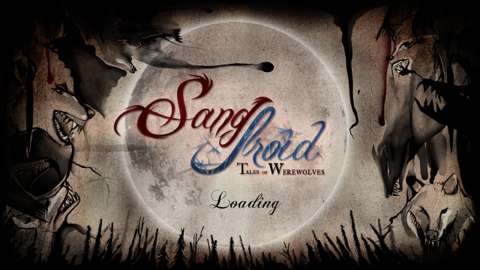
The sound effects are mostly appropriate to the occurrences that they are associated with. For example, the discharge of the muzzle-loading weapons does sound convincing. Likewise, the audio designers have done a good job of applying the effects of distance to the sounds, especially those of the wolves baying.
The voice-overs have varying quality of performance. The delivery for Jack’s voice-overs are mostly competent, but Josy’s were not, mainly due to the voice-actor’s attempts at making himself sound hoarse. The least convincing delivery is that for the Devil, who can come off as silly instead of diabolical.
Ultimately, their voice-overs are delivered together with the aforementioned poorly animated models in the cutscenes. Regardless of how good some of the voice-overs might be, the visuals sap most of the appeal of the cutscenes.
SUMMARY:
There could have been something to be had from this game. The tower defence gameplay is competent, as is most of the running about, shooting and hacking at things. Yet, the pacing of the game is padded with the typical incremental challenge that the tower defence genre is infamous for, with dwindling prospects of emergent gameplay.
The story-telling could have done better with its plot about the Devil dominating wolves to go after a lady with supernatural powers, or at least the game could have done it decently. However, terribly animated cutscenes diminish the brevity of the plot development. Add to this some less-than-competent coding like long initial loading and the need for Windows Media codecs, it is very difficult to recommend this game to anyone.

